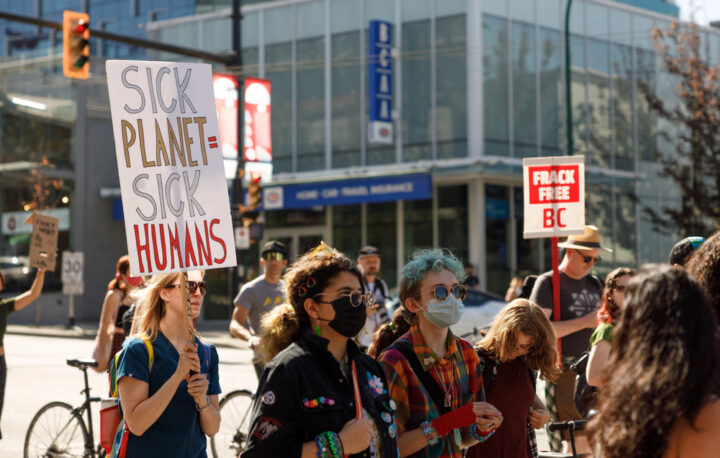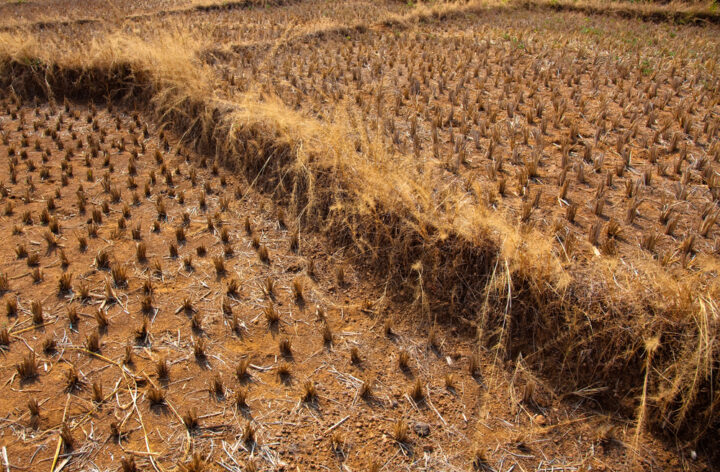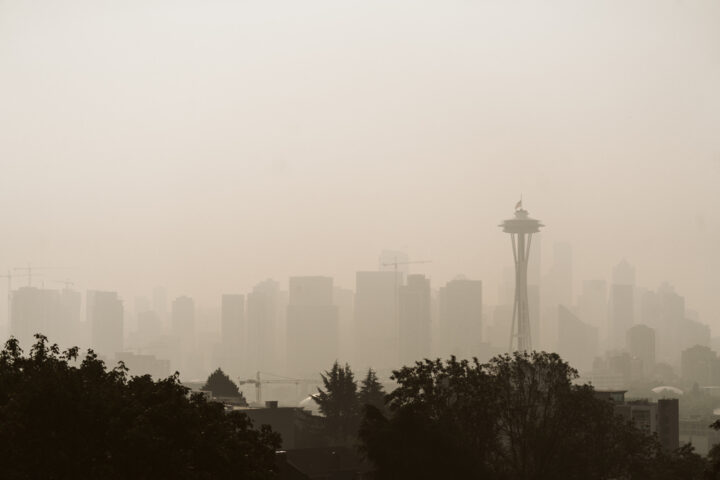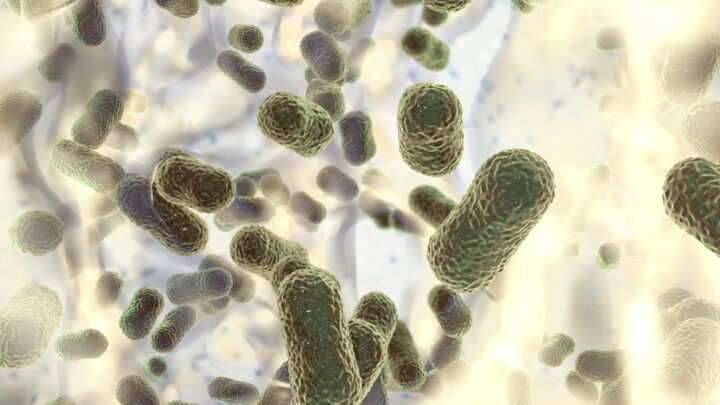How climate change affects our health
What does climate change mean for our health - and can tackling it bring health benefits?
By Amber Sawyer
Share
Last updated:
The planet is heating up. 2023 was the hottest year ever recorded in human history...until 2024 smashed its record. Already, experts at the Met Office are predicting that 2025 will be one of the top three hottest years alongside them.
This heat is destabilising weather patterns and the global water cycle, driving extreme weather events worldwide. In this explainer, we’ll get into the detail of how heatwaves, droughts, wildfires, storms and floods directly impact health, as well as their indirect impacts on food security, infectious disease and mental health.
While international focus on climate and health is increasing, rapid emissions reductions and adaptation measures are vital to save millions of lives worldwide. However, recent cuts to foreign aid threaten to undermine progress.
Direct impacts of extreme weather on health
Extreme heat
Extreme heat wreaks havoc on the body’s organ systems. For optimum functioning, internal temperature must be maintained at 37°C. Humans cool down using radiation (pumping blood to the surface for heat to be lost through the skin) and evaporation (i.e. sweating, when heat is lost through the evaporation of sweat).
However, as temperatures rise, your heart has to work harder to maintain these cooling mechanisms. For every 0.5°C increase in body temperature, it beats an extra 10 times a minute. Sweating also dehydrates you, making your blood thicker and harder to pump around the body, and causes the loss of key minerals like sodium and potassium that your heart muscle needs to function. All of this puts it under strain.
But it’s not just temperature that has an effect; humidity does too. Humid air is already saturated with water, meaning it can’t take on more. This can cause the evaporation of sweat to slow or even stop, which can lead to overheating and, ultimately, death. A metric called ‘wet-bulb temperature’ (WBT), which combines temperature and humidity, has been developed to measure humans’ ability to cool down. Scientists think that critical WBT for humans is 35°C (35°C at 100% humidity), though some research indicates it is likely lower. Places like Pakistan, India, Saudi Arabia and Mexico have already surpassed the critical WBT threshold at points due to extreme heat driven by climate change.
Extreme heat also affects our lungs. It induces hyperpnea, or breathing more deeply and rapidly than normal. Dehydration creates dryness in the airways, which can be uncomfortable and cause shortness of breath. High temperatures also make air pollution from plants (pollen), mould (spores), droughts and wildfires worse. They can even speed up ozone formation, a gas that reacts with other pollutants to form toxic smog at low altitudes. The European Respiratory Society has said that climate change is the greatest threat to people with respiratory illnesses.
There are even nervous system impacts. Dehydration impairs communication between nerve cells, as they use the electrolytes lost in sweating (sodium, potassium etc.) to send messages, reducing concentration and productivity. Being hot is also physically uncomfortable, and extreme heat has been shown to increase the secretion of stress hormones (adrenaline, noradrenaline and cortisol) and the neurotransmitter serotonin, which regulates mood. Pain, stress and low mood can make us irritable and aggressive. People with nervous system and psychiatric disorders are particularly vulnerable, as many display heat intolerance (an over-sensitivity to heat) which can trigger episodes of their condition. For those that are medicated, this is compounded by the fact that many psychiatric drugs like antidepressants reduce the body’s ability to regulate temperature.
On top of all this, high temperatures reduce the amount and quality of sleep we get. In 2023, extreme heat led to a record 6% increase in hours of lost sleep globally compared with the 1986-2005 average. Poor sleep has negative consequences for physical and mental health and is responsible for around 8% of deaths.
Extreme heat is increasing worldwide. According to the World Meteorological Organisation (WMO), the past ten years (2015-2024) are the ten warmest years on record. The World Weather Attribution (WWA), a team of international climate scientists that analyse extreme weather events, are repeatedly finding that heatwaves are being driven by climate change.
2024 was the first calendar year with a global mean temperature of more than 1.5°C above the pre-industrial average (1850-1900). While one year above 1.5°C does not violate the Paris Agreement target, it shows it is in grave danger and that immediate emissions reductions are necessary to keep temperatures down.

Droughts
Droughts can obviously reduce the amount of water for humans to drink, causing chronic dehydration.
They also mean less is available for sanitation (the provision of public health services, such as sewage disposal) and hygiene (practices that maintain health, like hand washing). This can increase the spread of diseases like food poisoning, flu or worse.
Reduced rainfall, stream and river flows cause stagnation, allowing pathogens (disease-causing microorganisms) and pollutants to accumulate in water sources. During a drought, people are more likely to seek water and water-based recreation, bringing them into contact with these harmful substances. Farmers may be forced to use contaminated water to irrigate their crops, facilitating the spread of food-borne pathogens like E. coli and Salmonella.
Stagnant water bodies are also ideal breeding grounds for mosquitos, which carry diseases like dengue and malaria.
Lastly, drought conditions contribute to dust storms and wildfires, both of which create air pollution that irritates people’s lungs, make them more susceptible to infections and worsen chronic conditions like asthma and COPD.
In 2022 and 2023, almost 2bn people worldwide – nearly a quarter of humanity – were living under drought conditions, mostly in low- and middle-income countries. Half (48%) of global land area was affected in 2023, up from 15% in the 1950s. These hot, dry conditions caused severe sand and dust storms, which increased the number of people exposed to dangerously high particulate matter concentrations by almost a third.
WWA have several recent analyses linking droughts to climate change.

Wildfires
During a fire, the concentration of oxygen usually drops to 10-15%, causing death by suffocation. Death can also occur through injury from falling objects or electrocution as infrastructure is damaged.
Research has shown that people burned by wildfires have worse outcomes than those burned by other sources. They have 10% higher mortality, stay in hospital for three days longer, spend almost a week longer in intensive care, are 6x more likely to be readmitted and have a 12% higher risk of wound infection than non-wildfire burns patients. There is debate as to why this is, but it could be because there are high levels of microbes in wildfire smoke.
Wildfire smoke contains a mix of pollutants including carbon monoxide, nitrogen dioxide, ozone, particulates and even cyanide. 60-80% of all sudden deaths occurring at the scene of a fire are because of smoke inhalation.
These substances persist in the atmosphere after the event. From 2000-2019, over 1.5m deaths per year were attributable to air pollution from wildfires. This included 450,000 cardiovascular deaths and 220,000 respiratory deaths every year. Over 90% of these deaths were in low- and middle-income countries.
Wildfires cause toxic chemicals to accumulate in the environment, affecting water and food supplies, and they also change the chemical and physical properties of soil which increases the risk of landslides and floods.
WWA have linked several recent wildfires, including those in LA in January 2025, to climate change.

Storms and floods
Storms, floods and landslides can cause injury and death by drowning or being crushed.
Flood waters contain pollutants and pathogens, meaning direct exposure can irritate the skin and gut and increase the risk of infection by water- and rodent-borne diseases.
If a property does not adequately dry out after a flood, central heating is damaged and/or people cannot afford to heat their homes, mould grows. Prolonged exposure to mould has serious health impacts.
Over the last decade, nearly two thirds of global land area saw an increase in the average number of extreme precipitation days per year compared to the 1961-1990 average. Research has shown that, after a flood event, the risk of death increases by around 2% for any cause, almost 3% for cardiovascular mortality and nearly 5% for respiratory mortality, with risk remaining elevated for up to 60 days post-flood.
WWA have several analyses on floods, including the one in Valencia in October 2024 which was made twice as likely and 12% more intense due to human-induced climate change.
Almost half of Valencia’s flood victims (104 of 216 people) were aged over 70. Research has shown that communities with a higher proportion of older people are more at risk of death from flooding.
Indirect impacts of extreme weather on health
Though each extreme weather event has its own unique impacts, they can all overwhelm emergency services, prevent access to patients, create food insecurity, facilitate the spread of infectious disease and cause poor mental health.
Food insecurity and malnutrition
All extreme weather events can directly kill crops and livestock, create ideal conditions for pests and diseases and induce stress that reduces productivity. Lower yields result in higher prices, which causes malnutrition when people can’t afford to buy enough healthy food.
For example, climate change is driving infection by Black Sigatoka disease in bananas. Infected plants show reduced yields of up to 80% if left untreated. Bananas and plantains form an important part of the diet of over 400m people in producer countries.
The UN’s World Food Programme (WFP) has said that the risk of hunger and malnutrition could rise by 20% by 2050 if the global community fails to act now on climate change.
We are already seeing this start to happen. In 2020, the Horn of Africa entered its longest and most severe dry spell in over 70 years, with 2022 marking the driest springtime drought on record. Over 20m people experienced extreme hunger because of failed harvests and 9m livestock animals died.
In 2022, the increased frequency of heatwaves and droughts meant that 151m more people across 124 countries experienced moderate or severe food insecurity compared with the 1981–2010 average.
Infectious diseases
A vector is a living organism that spreads disease between hosts. These are commonly insects, with the most infamous being the mosquito. Mosquitos spread pathogens when they bite.
Different species act as vectors for different pathogens. Mosquitos of the genus Aedes, particularly Aedes aegypti (the yellow fever mosquito) and Aedes albopictus (the Asian tiger mosquito) are vectors for dengue, chikungunya and Zika. Culex pipiens (the common house mosquito) is a vector for West Nile Virus (WNV). Mosquitos of the Anopheles genus transmit malaria.
Dengue, chikungunya, Zika and WNV are all viral infections that cause similar symptoms (fever, headaches, muscle and joint pain, nausea, vomiting, fatigue and rash) and can be fatal.
Malaria is caused by parasites of the genus Plasmodium. There are five species that cause disease in humans, with the most dangerous being P. falciparum and P. vivax. Malaria causes fever, chills and headache, which can progress to confusion, seizures and difficulty breathing. As the first symptoms are similar to viral illnesses, it can be hard to distinguish as malaria, but if left untreated P. falciparum can cause death within 24 hours. With proper resources, malaria is preventable and curable.
These diseases were historically confined to the tropics. However, warming from climate change is enabling mosquitos to survive further north and south, expanding their geographic range. It also means they can persist through the winter, extending the disease transmission season. High temperatures also speed mosquito lifecycles and pathogen replication, while storm-flood-drought cycles create stagnant water for them to breed in, making epidemics harder to control.
The global transmission risk of dengue by Aedes albopictus and Aedes aegypti is increasing dramatically as their range increases. According to the European Centre for Disease Prevention and Control (ECDC), there were over 14m dengue cases and over 10,000 dengue-related deaths in 2024. This is the highest ever level of global infection, smashing 2023’s record of 6.5m cases worldwide. South America was the worst affected, suffering an ‘unprecedented increase’, with Brazil holding the record: it reported around 10m cases in 2024 and surpassed its ‘worst case forecast’ for the year as early as June. In November, a team of US researchers found that climate change was responsible for a fifth of the surge in dengue cases last year.
Dengue has even reached Europe. While there were only 73 locally acquired cases from 2010-2021 (roughly seven per year), this rose to 71 in 2022 and 130 in 2023. Aedes aegypti is now established in Cyprus and several EU outermost regions (e.g. Madeira and French Caribbean islands), while Aedes albopictus is established in 13 EU/EEA countries (Austria, Bulgaria, Croatia, France, Germany, Greece, Hungary, Italy, Malta, Portugal, Romania, Slovenia and Spain) and has been introduced to seven more (Belgium, Cyprus, Czechia, Liechtenstein, the Netherlands, Slovakia and Sweden).
Rising temperatures are also causing the geographic range of some water-borne pathogens to expand, while sea level rise, storms and floods are increasingly bringing them into contact with people. Vibrio bacteria, that live in brackish water, are a prime example. They cause vibriosis, which can manifest as mild gut issues to life-threatening wound infections depending on which species is responsible. The coastline suitable for Vibrio transmission has increased by 329km every year since 1982 due to warming coastal waters. In 2022, 81 countries had areas suitable for Vibrio transmission, putting 1.4bn people at risk (28% above the 1982-2010 average). In 2023, cases reached an estimated record high of 692,000 globally, up nearly 14% from the previous record high the year before.
V.cholerae is the Vibrio species that causes cholera. African countries have suffered serious storms and flooding over the past few years because of climate change. 2024's wet weather was particularly bad, causing more than 2,000 deaths and displacing millions. Relief Web (a UN agency) reported that 16 countries experienced unprecedented flooding 'due to the growing impact of climate change’, with well over 4m people affected in west and central Africa and over 2m in eastern Africa. According to charity UNICEF, this created ‘one of the worst cholera outbreaks in decades’. Children were disproportionately affected, accounting for over half of reported cases in some places. Death rates of up to 40% were recorded among children under five. UNICEF has said that climate change made things worse by triggering population movements, limiting access to safe water and sanitation and straining already weak healthcare systems. Despite being desperately needed, there was a global shortage of cholera vaccines.
But it’s not just these examples. Research has shown that over half of known infectious diseases are being exacerbated by climate change in over 1,000 unique ways.
There is even the risk of new diseases we've never seen before. One study found that thawing Arctic permafrost could contain antibiotic-resistant strains of bacteria, while another found over 1,700 viruses in a melting glacier in the Tibetan plateau. We have no idea what will happen when these are released into the environment.

Poor mental health
Research consistently shows that extreme weather events increase rates of mental ill health.
For example, in their 2023 report, the UK Health Security Agency, (UKHSA, part of the government) cites studies showing that the rate of post-traumatic stress disorder (PTSD) is over 11% worse, anxiety is nearly 18% worse and depression is over 19% worse on average after a wildfire. Research has shown that these impacts can persist for years.
Poor mental health can lead to sleep disturbance and substance misuse. One study found that those suffering from depression were twice as likely to display alcohol or drug dependence six months after a wildfire.
Extreme weather events also create the phenomenon of ‘solastalgia’, or the feeling of loss of place, which results from losing one’s home and community.
The climate crisis is a health crisis
As temperatures rise and extreme weather ramps up worldwide, billions of people are at risk from these health impacts.
And the scariest part is that we don’t fully understand how bad things could get. Scientists have said that the disease burden from climate change is likely to be much greater than current models can quantify, because some health effects do not appear immediately after exposure and accumulate over time.
Lifestyle and environmental factors have been found to be 10x more important than genes in the risk of early death, and climate change will make it much harder for us to achieve healthy living conditions.
Increasing international focus
Health experts have been sounding the alarm for a while. In 2021, the Lancet – one of the world’s leading medical journals – said that ‘the greatest threat to global public health is the continued failure of world leaders to keep global temperature rise below 1.5°C and to restore nature’, a position they reiterated in 2023. The World Health Organisation (WHO) has also come out strongly, saying that ‘climate change is making us sick, and urgent action is a matter of life and death’.
In response, 70% of 279 public health institutions worldwide provided training on climate and health to clinicians in 2023. In 2024, 25 European universities launched the European Network on Climate & Health Education (ENCHE), to give more than 10,000 medical students training on climate-related health conditions rising across the continent.
World leaders are also starting to pay attention. At COP28 in Dubai, UAE in 2023, there was a dedicated Health Day, the outcome of which was a declaration on climate and health. This was the first time ever that health was included in a COP. COP29 in Baku, Azerbaijan built on this in 2024, with a dedicated Health Pavillion, a WHO special report and health guidance for countries developing their Nationally Determined Contributions (NDCs).
As a result, funding is increasing. Health-related adaptation funding allocated by the Green Climate Fund rose from 17% ($178m) in 2021 to 27% in 2023 ($423m), i.e. around a 137% increase in total funding.
You may have heard that the number of people dying from natural disasters has decreased, which is true. Deaths fell dramatically between 1970-2019, but according to the WMO, this is due to better early warning systems and coordinated disaster management. The actual number of extreme weather events increased fivefold over the same period, with economic costs skyrocketing. Losses totalled nearly $184bn in the 70s but rose to almost $1.5tn in the 2010s. As climate change progresses, these losses will get worse.
Development aid can protect people from the health impacts of climate change. Over 90% of deaths from natural disasters occur in developing countries. However, Trump’s recent cuts to US foreign aid, followed shortly by the UK’s, have cut this protection.
These decisions can have direct impacts on the UK too. We import nearly half our food, much of which comes from climate impact hotspots. UK international climate finance has been used to support struggling farmers overseas and protect imports of key commodities like bananas and rice, which we can’t grow at commercial scale here.
For an understanding of how climate change – and net zero – will affect health in the UK specifically, read this.
Share